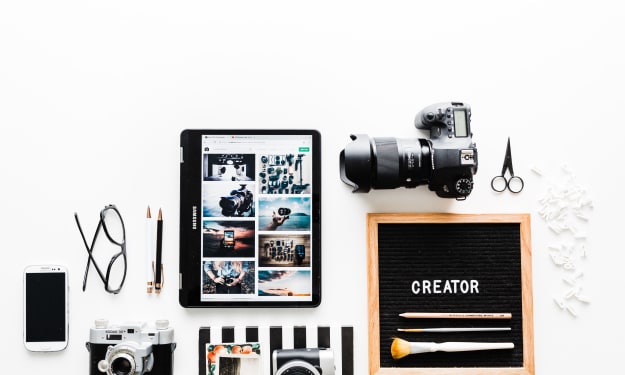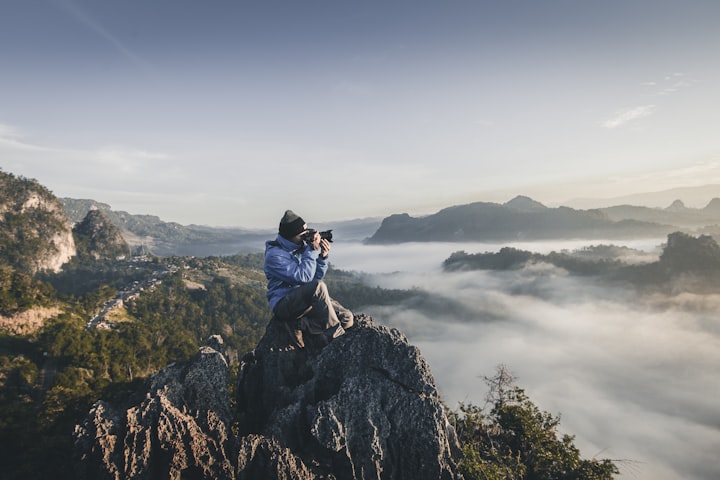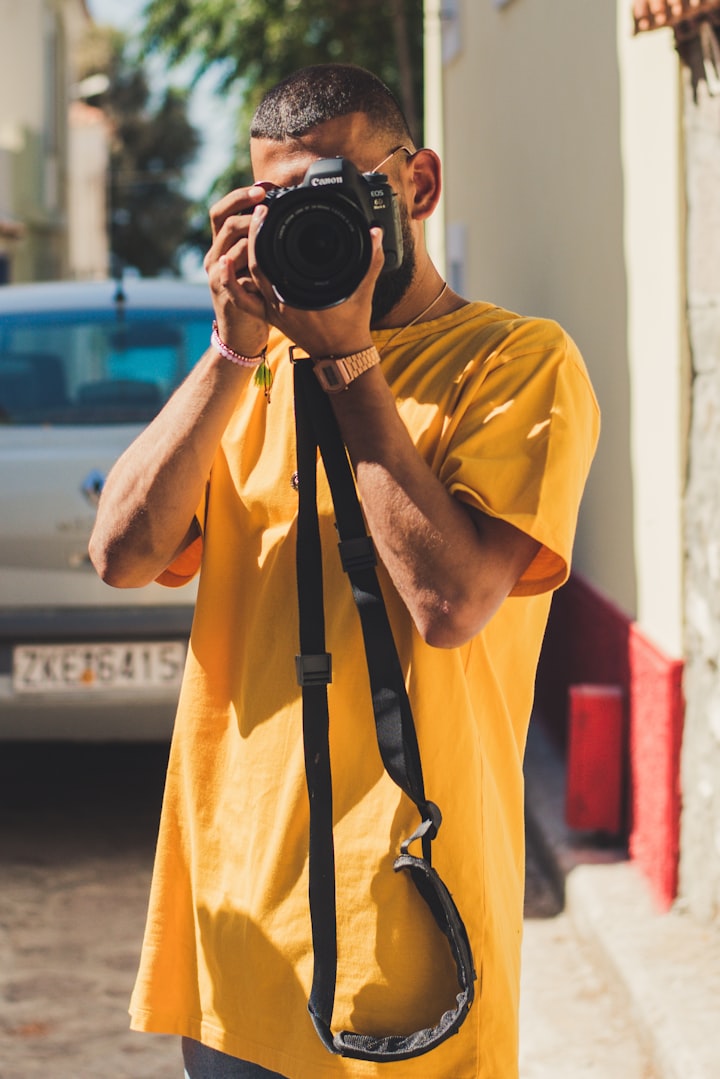The Secret Camera Stores Don’t Want You To Know
And this secret will save you a ton of money in life too

Every hobby, sport, and profession has stores or other distribution channels that sell the equipment and supplies specific to that genre. And whether a camera store, a music store, a craft store, a motorcycle shop, a video game store or any other, to the aficionado, they are all candy stores.
We visit them any time we are nearby and gaze at the colorful treats. We browse them online and bookmark our favorites. Sometimes we even still get those huge colorful, paper catalogs in the mail and turn the pages, salivating.
Camera stores are no different. And while the major brick and mortar outlets are down to a dozen or so around the country, the online presence is still strong. And, of course, if you are a photographer, you are on the email list of several. They entice you weekly with ads and specials. The savvier will produce articles regaling the newest technology and make you feel like a troglodyte if your equipment is more than a few months old.
They make sure you know one unassailable fact. That your photography would be so much better, that it would rise to new and formerly unattainable heights, if only. If only you bought a new body. If only you got the latest, more expensive lens that has more letters after the name than yours. If only.
But there’s one thing they don’t tell you. One secret that everyone working at those stores know, but are keeping it a secret from the buying public. This is a secret held so dear, that I hesitate to even bring it out into the light. A secret that will improve your photography while saving you a fortune at the same time.
Are you ready?
I don’t think you are, so I’m going to tell you a story, while you prepare yourself mentally for this revelation.
My first DSLR was the Canon 20D. I bought it in late 2005 along with a couple of kit zooms. At the time, I didn’t; realize they were ‘kit’ lenses, so I went out in my ignorance trying to capture a great image. After all, this was an expensive camera — it had to take great pictures.
Unfortunately, most of the pictures weren’t up to my expectations, so I did some research. That’s when I found out that the lenses I bought were sub-par. I then sprung for two lenses in the Canon L class. One was putty white in color and the other had the status symbol red ring around it. Now, I can compete with the big guys.
Except my images still weren’t quite good enough. I expected high-contrast, well-saturated, tack-sharp images and I just wasn’t getting them. Maybe I had faulty lenses. I let a friend who was a professional photographer borrow my lenses. The pictures he took with them were fantastic.
Whew! The problem wasn’t the new, very expensive lenses I bought. So what could it be?
By this point, time had passed. The 30D had come and gone and the new 40D was just out. I surfed and googled and browsed and researched. This was it. The holy grail. Or at least the holiest grail I could afford. There was the 1D, but that was crazy expensive.
So, I got me a 40D. Bigger, badder and brighter than the 20, with this awesome LCD screen on the back that was way bigger than my old one. At least now, I could chimp adequately. So, I clamped on the 70–200 lens and went searching for wild beasts to capture. Finally, after patiently beating through the brush, I came upon the rare and elusive grey squirrel.
One usually has to go outside to find one of these creatures.
I went happily snapping away with my new rig and rushed home to view my work.
WTF? They still weren’t very good. Maybe there’s something wrong with the camera. Maybe the lenses need to be calibrated to this body. Yeah! That’s it, lens calibration. Now, we’re talking.
I never got around to sending the lenses in. I pretty much shot all day every day and wasn’t willing to be without my equipment long enough to get them fixed. I’d just have to settle for good enough.
But, I began to notice something odd. Every once in a while, an image would turn out perfect. How is that possible? If the lens or camera is faulty, wouldn’t it be faulty all the time? I know from many years of computer support that an intermittent problem like this is the hardest to diagnose.
Maybe, it would be easier to buy a new camera.
And so a couple of years after buying the 40D, I went all in and bought the 5D MKIII. Now I was king of the hill, top of the heap. Start spreading the news.
I couldn’t wait to get home with that first card full of images. A professional body with a professional lens on it. What could possibly go wrong?
Well, there is one other tiny little detail that could be messing things up.
As I used to tell people when diagnosing a hard to find computer glitch.
Maybe there’s a nut loose on the keyboard.
As unlikely as it seems, could there even be the remotest possibility that it is the photographer and not the equipment making the mistakes? Yeah, I didn’t think so either.
But as I did more research and practice. After many more frames of shooting and paying attention to what, when, and how I shot, I discovered something hard to fathom.
In many cases, I was making the same mistakes over and over, expecting different results. What is it they call that again?
And worse, they were mistakes that are documented everywhere you look.
I was expecting a huge depth of field shooting at f6.
I was shooting at noon and wondering why my pictures were hazy.
I was shooting aperture priority, paying no attention to shutter speed, and getting fuzzy images.
I was underexposing in dark scenes and getting noise.
I was doing what they told me not to do, and wondering what was wrong.
There was a nut loose on the shutter button.
So, I tightened it up.
And, lo and behold, my images got better overnight. Even while using the same crappy $5,000 worth of equipment.
So, as the savvier of you have probably guessed by now. That’s the secret the camera stores don’t want you to know.
It’s not your equipment, it’s you.
Until you have mastered what you have, whether it be a high-end, medium format camera or your cellphone, buying something new isn’t going to help.
Sorry, Adorama and B&H, I hope you don’t have to shutter your doors after my little revelation.
It came to my attention that Central Camera, featured in the stock image I got from Unsplash to illustrate this article, was burned down in the riots last year. Their website is still up and I would appreciate it if anyone needing any gear would consider shopping there. Here is the link.
They are also accepting donations of new and used camera equipment, working or not. You can contact them directly here.
I will also donate any proceeds from this article to the store in hopes that they can rebuild soon. They are the oldest camera store in Chicago and I wish them well in their efforts.
Darryl

About the Creator
Darryl Brooks
I am a writer with over 16 years of experience and hundreds of articles. I write about photography, productivity, life skills, money management and much more.







Comments
There are no comments for this story
Be the first to respond and start the conversation.